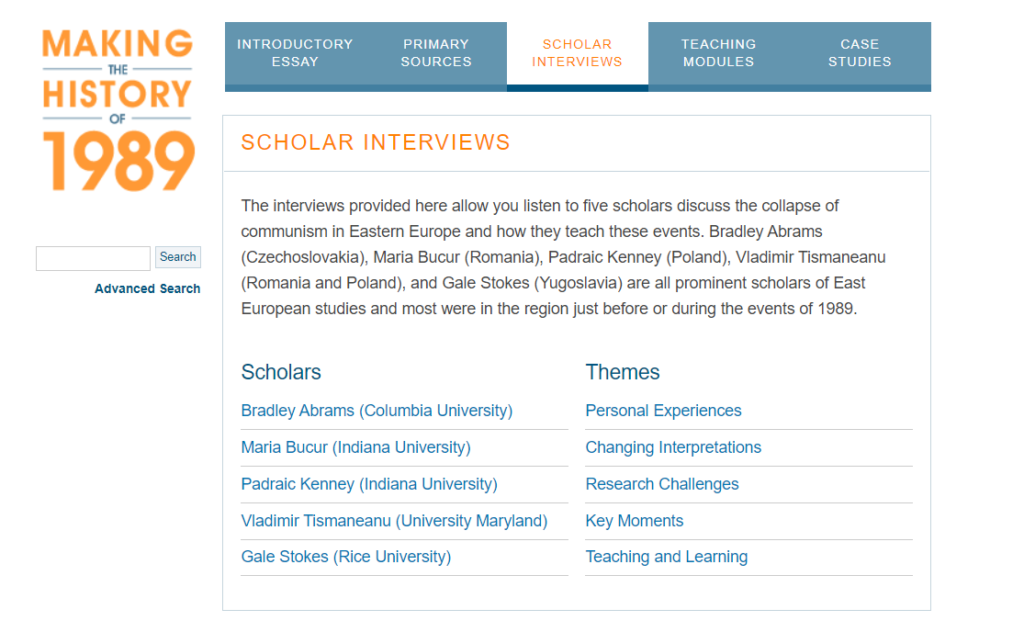Making the History of 1989. http://chnm.gmu.edu/1989/. Created and maintained by the Roy Rosenzweig Center for History and New Media (CHNM) at George Mason University. http://chnm.gmu.edu/1989/about. Reviewed February 16- February 17.
The Roy Rosenzweig Center for History and New Media (RRCHNM) created the Making the History of 1989 to help educate people about what lead up to the collapse of the Soviet Union by examining the changes happening in the Eastern Bloc. The project does this by giving an overview of each country in the Eastern Bloc and how they eventually fell away from the Communist Party as well as the events that contributed to this widespread shift away from Communism. Unfortunately, the sections for Albania, Romania, and Yugoslavia are missing from the introduction. They are tabs that can be clicked on, but only a blank page is shown in response. Aside from this, the introductory section is well done, and it provides the viewer with all the necessary information to start looking at and analyzing the information in the following sections.
The next section includes primary sources relating to these events. This section presents the viewer with a list of countries to select from, showing the viewer a page with primary sources relating to the country they select. This works well because it does not just list sources under one country, but it lists that source under each country it is related to. The page also shows a “featured” source upon opening to immediately draw attention to an interesting source. The website changes the source each time the page is navigated to. This page is well done, and the only issue with it is the listing of sources under Turkey. When Turkey is selected a page with no sources pops up. Even if there are no sources for Turkey it would perhaps be simpler to not include Turkey.
The third section contains interviews with scholars, focusing on the events that lead to Communism falling apart and how they cover this topic in their classes. The website separates these interviews into segments addressing each question asked. The viewer can sort these segments either by interviewer or by theme of questions. This enables the viewer to focus on a particular topic they are interested in or a certain researcher that they want to hear from. The questions here are well thought out and the answers are very informative to the listener.

The next section contains six thorough teaching modules that let students dive deeper and explore certain elements of this time period and opens discussion on how these events tie into the larger themes seen in the collapse of Communism. These teaching modules provide a lecture, multiple primary sources, teaching strategies, a lesson plan, and questions for the students to discuss and write about. The module makes sure to note where the research comes from and provides credit to those who helped create it. These modules challenge students to think and add variety, so the class is more than the teacher giving a lecture.
The last section provides twelve case studies that seem to be similar to the teaching modules. They are geared towards educators by providing primary sources, lecture portions, and a reflection section. They seem to contain fewer instructions so the students can focus on examining the sources and drawing their own conclusions for discussion.
The project is a great use of technology considering most of the information and content was created in 2007. There are some sections missing, as discussed above, but there is not a certainty if this is due to old code or if these sections were overlooked. A similar idea to the lesson plans could have been done physically, but this would have made them less accessible. The current format targets educators but provides enough information that it would be useful for anyone interested in this area of European history. The project should consider adding subtitles to the interviews so that people who are deaf or heard of hearing also have access to the information within. The many members, both faculty and students, of the RRCHNM did a great job in creating this project by allowing it to appeal to members of multiple audiences.
